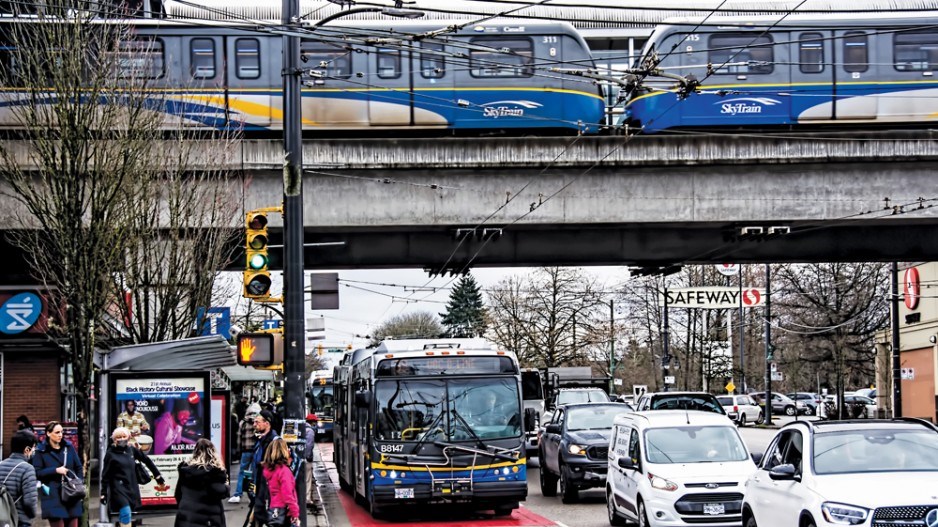As B.C. fleshes out the details of its transit-oriented development (TOD) legislation, research is showing exactly who will be impacted most by the provincial government’s new housing initiative.
Roughly one in three Metro Vancouver renters live in a TOD area, according to research from Simon Fraser University (SFU) City Program director Andy Yan, citing 2021 census data.
TOD areas represent land that is within 800 metres of a rapid transit station like a SkyTrain station, or 400 metres from a bus exchange.
Half the individuals who live in these areas are renters, while 21 per cent of households in TOD areas live in what is described as core housing need. Core housing need is colloquially thought of as when people have to use at least 30 per cent of their income to cover rent.
“Generally, renters do use transit more than homeowners. It's not any accident that there is this high proportion of renters near transit, because the region and municipalities have had plans in place for decades on linking up the town centres,” said Christina DeMarco, an urban planning instructor at SFU who spoke to Glacier Media about the data but did not participate in the research.
While living near transit can be beneficial for rental and low-income households, transit-oriented development does not always equal affordable living, she said.
“They just made a blanket policy on condos and rental,” said DeMarco. “You'll lose the existing affordable rental, and it will be replaced by condos, which are not affordable.”
About two in five (43 per cent) of all purpose-built rental buildings in Vancouver are in a proposed TOD area, while the median number of units contained within those buildings sits at six, according to Yan’s research.
Meanwhile, 89 per cent of purpose-built rental buildings in TOD areas are over 50 years old.
The province introduced legislation at the beginning of the month with the goal to speed up the construction of housing near transit hubs.
If passed, the legislation will require municipalities to outline TOD areas and approve any developments that meet provincial standards for allowable height and density.
The province is expected next month to provide more details on how this legislation can be applied.
“The devil is not only in the details, but it's in what we've seen so far,” said DeMarco. “It's not the way to go to solve the housing supply problem. We need all governments to collaborate, and this is the province dictating one solution for what municipalities have to do.”
Early analysis from the province predicts that the legislation could result in 100,000 new housing units in TOD areas across B.C. over the next 10 years.
Glacier Media reached out to the Ministry of Housing for comment but did not receive a response.
Updated Nov. 22 with comments from Christina DeMarco.






